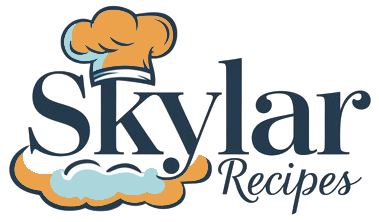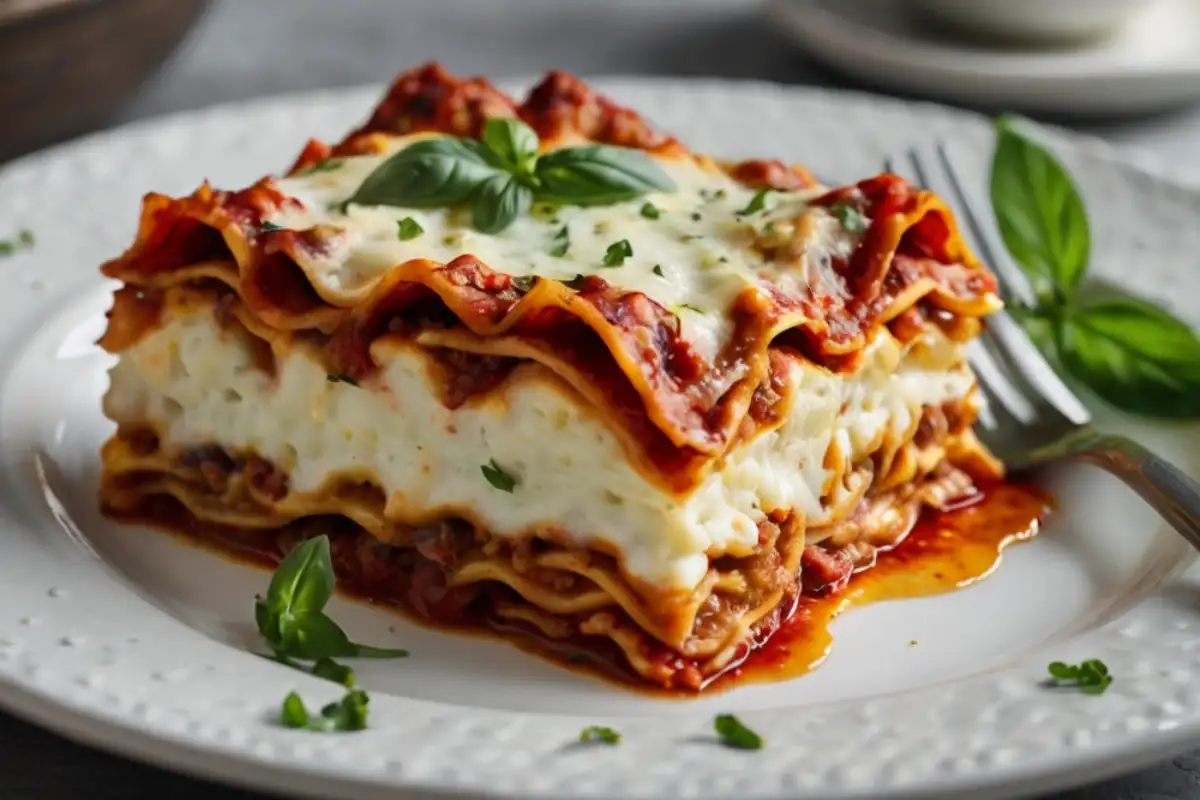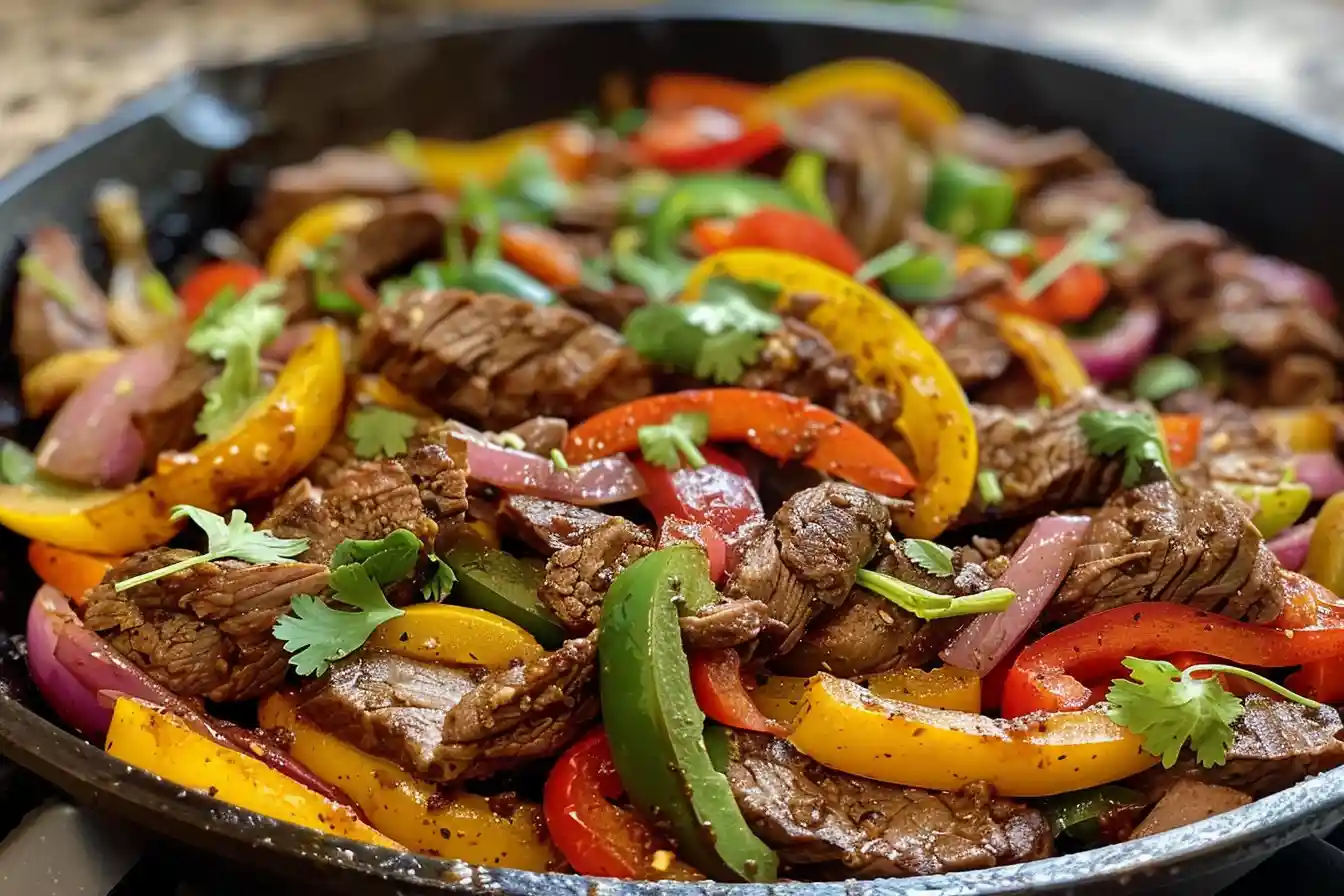Lasagna is a beloved dish worldwide, and its rich, cheesy layers are a key part of its appeal. But when it comes to choosing the cheese, why do people use cottage cheese instead of ricotta in lasagna? This is a question that many home cooks and food enthusiasts ponder, especially when seeking alternatives that suit their taste preferences, dietary needs, or budget.
What is Lasagna?
Lasagna is more than just a dish; it’s a culinary tradition with deep roots in Italian cuisine. The origins of lasagna can be traced back to ancient Greece and Rome, where pasta-like dishes were prepared using layers of dough. Over the centuries, lasagna evolved into the classic baked pasta dish we know today, characterized by layers of pasta, sauce, cheese, and sometimes meat or vegetables.
Cheese is an essential component of lasagna, contributing to its creamy texture and rich flavor. Traditionally, ricotta cheese is used in lasagna recipes, but more and more people are turning to cottage cheese as an alternative.
Traditional Lasagna Cheese: Ricotta
What is Ricotta Cheese?
Ricotta cheese is a soft, creamy cheese made from the whey left over after the production of other cheeses, such as mozzarella. It has a mild, slightly sweet flavor and a grainy texture, making it perfect for adding creaminess to dishes like lasagna, stuffed pasta, and desserts like cannoli.
Ricotta’s Role in Traditional Lasagna Recipes
In traditional lasagna recipes, ricotta cheese is often mixed with eggs and herbs to create a rich, creamy layer between the pasta and sauce. Its smooth texture helps to bind the layers together, ensuring that each bite is a perfect blend of pasta, sauce, and cheese.
Introduction to Cottage Cheese
What is Cottage Cheese?
Cottage cheese is a fresh cheese made from curds of varying sizes, often mixed with a small amount of cream to add richness. Unlike ricotta, cottage cheese has a more defined curd structure, giving it a slightly lumpy texture. It is known for its mild, slightly tangy flavor and is available in various fat content levels, from full-fat to low-fat and fat-free options.
Nutritional Profile of Cottage Cheese
Cottage cheese is a nutritional powerhouse, rich in protein and low in fat, especially in its low-fat and fat-free versions. A single serving of cottage cheese can provide a significant portion of the daily recommended intake of protein while being lower in calories compared to other cheeses like ricotta. This makes it a popular choice for those looking to maintain a healthy diet without sacrificing flavor.

Why Do People Use Cottage Cheese Instead of Ricotta in Lasagna?
Cost-Effectiveness of Cottage Cheese
One of the primary reasons people use cottage cheese instead of ricotta in lasagna is its cost-effectiveness. Cottage cheese is generally less expensive than ricotta, making it a budget-friendly alternative, especially when making large batches of lasagna for family gatherings or meal prep.
Health Benefits of Cottage Cheese
For health-conscious individuals, cottage cheese offers several advantages over ricotta. It typically has a lower fat content, particularly in low-fat and fat-free varieties, which can help reduce the overall calorie count of the dish. Additionally, cottage cheese is high in protein, making it an excellent choice for those looking to increase their protein intake while keeping fat levels in check.
Texture and Flavor Differences
The texture and flavor of cottage cheese differ from ricotta, which can significantly impact the final dish. Cottage cheese has a lumpier texture due to its curds, which can add an interesting contrast to the smooth layers of pasta and sauce in lasagna. The flavor of cottage cheese is also slightly tangier than ricotta, which some people prefer, especially when paired with the savory notes of tomato sauce and herbs.
Cost-Effectiveness of Cottage Cheese
Price Comparison Between Ricotta and Cottage Cheese
When comparing the cost of ricotta and cottage cheese, cottage cheese often comes out on top as the more affordable option. This price difference can be particularly noticeable when buying in bulk or for larger families. With the rising cost of groceries, many home cooks appreciate the savings they can achieve by opting for cottage cheese without compromising on taste or quality.
Cottage Cheese as a Budget-Friendly Option
Using cottage cheese in lasagna allows for cost savings that can be allocated to other ingredients or even to make larger portions. This is especially beneficial for meal prepping or feeding large groups, where every dollar saved can add up. Cottage cheese’s affordability makes it accessible to more people, ensuring that everyone can enjoy a delicious homemade lasagna without breaking the bank.
Health Benefits of Cottage Cheese
Lower Fat Content in Cottage Cheese
Cottage cheese is known for its lower fat content compared to ricotta, particularly in its low-fat and fat-free varieties. This can be an important factor for those who are trying to reduce their overall fat intake for health reasons, such as managing cholesterol levels or losing weight. By using cottage cheese in lasagna, it’s possible to enjoy a satisfying, cheesy dish while still adhering to dietary goals.
Cottage Cheese as a High-Protein Alternative
Protein is an essential nutrient for muscle repair, immune function, and overall health. Cottage cheese is rich in protein, with one serving providing a substantial portion of the daily recommended intake. For those who follow a high-protein diet, cottage cheese offers a way to incorporate more protein into meals without adding excess fat or calories.
Cottage Cheese and Calorie-Conscious Diets
For those on calorie-conscious diets, cottage cheese can be a great alternative to ricotta. Because it is lower in calories, using cottage cheese in lasagna can help reduce the overall calorie count of the dish, making it a better option for those who are watching their weight. Additionally, the high protein content of cottage cheese can help keep you feeling full and satisfied, reducing the temptation to overeat.
Texture and Flavor Differences
The Texture of Cottage Cheese vs. Ricotta
One of the most noticeable differences between cottage cheese and ricotta is their texture. Cottage cheese has a lumpier, more defined curd structure, while ricotta is smooth and creamy. This textural difference can be a deciding factor for many people when choosing between the two cheeses for lasagna.
In lasagna, the texture of cottage cheese can add a unique element to the dish, providing a slight contrast to the soft layers of pasta and sauce. This can be particularly appealing to those who enjoy a bit of variety in texture in their food.
How These Differences Impact Lasagna
The choice between cottage cheese and ricotta can significantly impact the final dish. Cottage cheese’s lumpier texture can create a more rustic, homemade feel to the lasagna, while ricotta’s smoothness offers a more traditional, uniform texture. The tangier flavor of cottage cheese can also add a new dimension to the dish, complementing the savory elements of the tomato sauce and herbs.
Flavor Variations and Preferences
Flavor is highly subjective, and some people simply prefer the taste of cottage cheese over ricotta. Cottage cheese’s slightly tangy flavor can add a bit of a zing to lasagna, which can be a refreshing change from the milder, sweeter taste of ricotta. Ultimately, the choice between cottage cheese and ricotta comes down to personal preference and the flavor profile you’re looking to achieve in your lasagna.
Versatility of Cottage Cheese in Cooking
Cottage Cheese in Other Dishes
Cottage cheese isn’t just for lasagna; it’s an incredibly versatile ingredient that can be used in a variety of dishes. From breakfast to dinner, cottage cheese can be incorporated into meals in numerous ways. It can be used as a base for dips, blended into smoothies for added protein, or even mixed with fruit for a simple, healthy snack.
In savory dishes, cottage cheese can be used as a filling for stuffed pasta, as a topping for baked potatoes, or as an ingredient in casseroles and quiches. Its versatility makes it a valuable addition to any kitchen, offering endless possibilities for creative cooking.
Adapting Recipes with Cottage Cheese
Many recipes that call for ricotta can be adapted to use cottage cheese instead. This can be a simple substitution in dishes like stuffed shells, manicotti, or even in desserts like cheesecake. When substituting cottage cheese for ricotta, it’s important to consider the texture and flavor differences and adjust the recipe accordingly.
For example, if you prefer a smoother texture, you can blend the cottage cheese in a food processor before using it in your recipe. This can help create a consistency more similar to ricotta while still enjoying the benefits of cottage cheese.

Recipes: Cottage Cheese Lasagna vs. Ricotta Lasagna
Classic Ricotta Lasagna Recipe
A classic ricotta lasagna recipe typically includes layers of pasta, marinara sauce, ground meat, ricotta cheese mixed with eggs and herbs, and a generous topping of mozzarella and Parmesan cheese. The ricotta mixture is spread between the layers of pasta and sauce, creating a rich, creamy texture that binds the ingredients together.
Ingredients:
- 12 lasagna noodles
- 1 pound ground beef or Italian sausage
- 4 cups marinara sauce
- 2 cups ricotta cheese
- 2 cups shredded mozzarella cheese
- 1/2 cup grated Parmesan cheese
- 2 large eggs
- 1 tablespoon chopped fresh basil or parsley
- Salt and pepper to taste
Instructions:
- Preheat your oven to 375°F (190°C).
- Cook the lasagna noodles according to the package instructions. Drain and set aside.
- In a large skillet, cook the ground beef or sausage over medium heat until browned. Drain excess fat.
- Add the marinara sauce to the meat and simmer for 10 minutes.
- In a medium bowl, mix the ricotta cheese, eggs, basil or parsley, salt, and pepper until well combined.
- Spread a thin layer of the meat sauce on the bottom of a 9×13-inch baking dish.
- Place a layer of lasagna noodles over the sauce.
- Spread half of the ricotta mixture over the noodles, followed by a layer of meat sauce. Sprinkle with mozzarella and Parmesan cheese.
- Repeat the layers, ending with a final layer of sauce and cheese on top.
- Cover the dish with aluminum foil and bake for 25 minutes. Remove the foil and bake for an additional 25 minutes, or until the cheese is bubbly and golden.
- Let the lasagna rest for 10 minutes before serving.
Cottage Cheese Lasagna Recipe
A cottage cheese lasagna recipe follows a similar structure but substitutes cottage cheese for ricotta. This version is lighter and slightly tangier, appealing to those who prefer a more budget-friendly and health-conscious option.
Ingredients:
- 12 lasagna noodles
- 1 pound ground beef or Italian sausage
- 4 cups marinara sauce
- 2 cups cottage cheese (blended if a smoother texture is desired)
- 2 cups shredded mozzarella cheese
- 1/2 cup grated Parmesan cheese
- 2 large eggs
- 1 tablespoon chopped fresh basil or parsley
- Salt and pepper to taste
Instructions:
- Preheat your oven to 375°F (190°C).
- Cook the lasagna noodles according to the package instructions. Drain and set aside.
- In a large skillet, cook the ground beef or sausage over medium heat until browned. Drain excess fat.
- Add the marinara sauce to the meat and simmer for 10 minutes.
- In a medium bowl, mix the cottage cheese, eggs, basil or parsley, salt, and pepper until well combined.
- Spread a thin layer of the meat sauce on the bottom of a 9×13-inch baking dish.
- Place a layer of lasagna noodles over the sauce.
- Spread half of the cottage cheese mixture over the noodles, followed by a layer of meat sauce. Sprinkle with mozzarella and Parmesan cheese.
- Repeat the layers, ending with a final layer of sauce and cheese on top.
- Cover the dish with aluminum foil and bake for 25 minutes. Remove the foil and bake for an additional 25 minutes, or until the cheese is bubbly and golden.
- Let the lasagna rest for 10 minutes before serving.
Comparative Analysis of Both Recipes
Both lasagna recipes are delicious in their own right, but the choice between ricotta and cottage cheese will largely depend on personal preferences and dietary considerations. Ricotta lasagna is richer and creamier, while cottage cheese lasagna is lighter and tangier. Those looking for a healthier option might prefer cottage cheese, while those seeking a traditional taste may opt for ricotta.
Cultural and Regional Preferences
Geographic Differences in Lasagna Preparation
Lasagna is prepared differently across various regions, with each area adding its unique twist to the dish. In Italy, for instance, lasagna is often made with ricotta in the south, while in the north, béchamel sauce is commonly used instead of any cheese. In the United States, cottage cheese has become a popular substitute for ricotta, particularly in the Midwest and South, where it is more readily available and affordable.
Traditional vs. Modern Adaptations
As with many traditional dishes, lasagna has evolved over time, with modern adaptations reflecting changes in available ingredients, dietary trends, and cultural influences. The substitution of cottage cheese for ricotta is just one example of how this classic dish has been adapted to suit contemporary tastes and preferences.
The Impact of Dietary Restrictions
Lactose Intolerance and Cheese Alternatives
For those with lactose intolerance, both ricotta and cottage cheese may pose challenges, as they contain lactose. However, there are lactose-free versions of both cheeses available on the market, allowing individuals with lactose intolerance to enjoy lasagna without discomfort. Additionally, other cheese alternatives, such as almond or cashew-based cheeses, can be used as substitutes in lasagna recipes.
Cottage Cheese in Vegetarian and Gluten-Free Diets
Cottage cheese is a versatile ingredient that fits well into vegetarian and gluten-free diets. When making a vegetarian lasagna, cottage cheese can be used as the primary cheese layer, combined with vegetables like spinach, mushrooms, and zucchini for added flavor and texture. For those following a gluten-free diet, cottage cheese can be paired with gluten-free lasagna noodles to create a dish that meets dietary needs without sacrificing taste.
Consumer Trends and Cottage Cheese Popularity
Trends in Cheese Consumption
The popularity of cottage cheese has seen a resurgence in recent years, driven by its health benefits and versatility. As consumers become more health-conscious and seek high-protein, low-fat foods, cottage cheese has become a staple in many households. This trend has also influenced the way people prepare traditional dishes like lasagna, with cottage cheese emerging as a preferred alternative to higher-fat cheeses like ricotta.
Cottage Cheese’s Rise in Popularity
Cottage cheese’s rise in popularity can be attributed to several factors, including its affordability, health benefits, and adaptability in the kitchen. As more people discover the versatility of cottage cheese, its use in a variety of dishes, including lasagna, continues to grow. This trend reflects a broader shift towards healthier eating habits and the desire for more accessible, cost-effective ingredients.
Expert Opinions on Cottage Cheese vs. Ricotta
Chefs’ Perspectives
Many chefs appreciate the unique qualities that both ricotta and cottage cheese bring to a dish. While ricotta is often favored for its creamy texture and traditional role in Italian cuisine, cottage cheese is praised for its tangy flavor and nutritional benefits. Some chefs enjoy experimenting with both cheeses, depending on the dish they are creating and the flavor profile they wish to achieve.
Nutritionists’ Views
Nutritionists often recommend cottage cheese as a healthier alternative to ricotta, particularly for those looking to reduce their fat intake or increase their protein consumption. The high protein content and lower calorie count of cottage cheese make it an excellent choice for weight management and overall health. However, nutritionists also acknowledge that both cheeses have their place in a balanced diet, and the choice between them should be based on individual dietary needs and preferences.
In the debate of why people use cottage cheese instead of ricotta in lasagna, several factors come into play, including cost, health benefits, texture, and flavor preferences. Cottage cheese offers a lighter, tangier, and more budget-friendly alternative to ricotta, making it a popular choice for many home cooks. Whether you choose to stick with traditional ricotta or experiment with cottage cheese, both options can create a delicious and satisfying lasagna.





